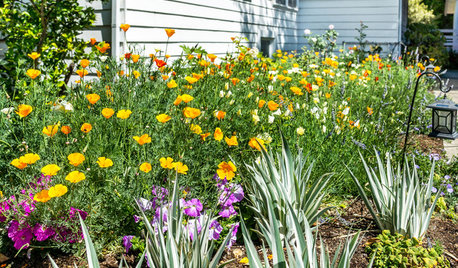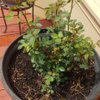Unlurking: Bareroot Rose ( Zone 10) question
DrPekeMom
10 years ago
Related Stories

GARDENING GUIDESThe Beauty of Bare-Root Plants
Plant dormant trees and shrubs in fall using the easy, affordable bare-root method and enjoy beautiful results in spring
Full Story
GARDENING GUIDESWhat Kind of Roses Should You Grow?
Want to add the beauty of roses to your garden? Find out which ones, from old-fashioned to modern, are right for you
Full Story
GARDENING GUIDES6 Captivating Roses for an Alluringly Fragrant Garden
Perfume your garden with aromas from richly spicy to lightly sweet, without sacrificing an inch of color
Full Story
WINTER GARDENINGPruning Secrets for Exquisite Roses
Encourage gorgeous blooms year after year with this time-tested advice on how to prune your rosebush in winter for health and shape
Full Story
GARDENING GUIDESLearn the Secret to Bigger and Better Roses
Grow beautiful roses using both ordinary and unusual soil amendments
Full Story
SPRING GARDENINGTop 10 Scented Plants for Your Garden
A palette of perfumed plants can transform even the smallest of gardens into a sensory delight
Full Story
GROUND COVERSGround Force: 10 Top Ground Covers for Your Garden
Protect your soil from weeds and drought this summer with a living mulch of ground covers
Full Story
LANDSCAPE DESIGN10 Ideas for a Creative, Water-Conscious Yard
Check out these tips for a great-looking outdoor area that needs less water
Full Story
DECORATING GUIDESTop 10 Interior Stylist Secrets Revealed
Give your home's interiors magazine-ready polish with these tips to finesse the finishing design touches
Full Story
GARDENING GUIDES10 Solutions for Soggy Soil
If a too-wet garden is raining on your parade, try these water-loving plants and other ideas for handling all of that H2O
Full StoryMore Discussions








cecily
roseseek
Related Professionals
New Bedford Landscape Architects & Landscape Designers · Camas Landscape Architects & Landscape Designers · Prairie Ridge Landscape Architects & Landscape Designers · Cerritos Landscape Contractors · Clark Landscape Contractors · Cudahy Landscape Contractors · Dudley Landscape Contractors · Gainesville Landscape Contractors · Holtsville Landscape Contractors · Lake Zurich Landscape Contractors · Melrose Landscape Contractors · North Ridgeville Landscape Contractors · Peachtree City Landscape Contractors · Plantation Landscape Contractors · Shoreview Landscape ContractorsKippy
jerijen
roseseek
Kippy
DrPekeMomOriginal Author
Kippy
jerijen
roseseek
henryinct